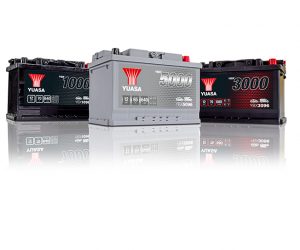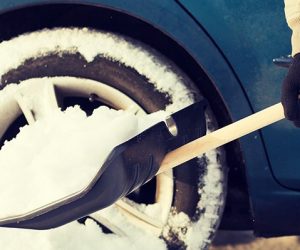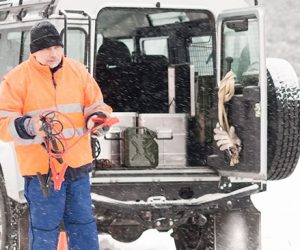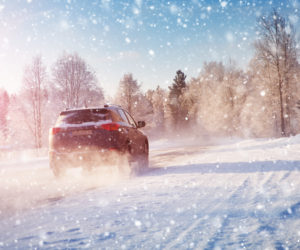
Don’t let winter stop you – get ready for the cold weather with your free Yuasa Battery Check.
Before you leave
A few simple tasks can make sure you and your vehicle are ready for a winter journey:
– If the weather is really bad only drive if it’s absolutely necessary. If you feel the conditions are too treacherous don’t be afraid to turn back.
– Plan your route to favour major roads. Check local traffic reports and online to find out if there are any traffic problems, met office warnings or weather related road closures.
– Give yourself plenty of time before you set off to clear snow or ice from your car windows and mirrors
– Defrost the outside of your vehicle using de-icer or lukewarm water (never use hot or boiling water). An ice scraper will also come in very handy.
– Turn off the wipers or any automatic wiper control before switching the car on. If the wipers are frozen to the screen there is a risk of blowing the fuse if they are switched on and trying to clear a frozen screen with the wipers will result in wiper blade damage and premature wear.
– Make sure you have removed any snow from the top of your car. You don’t want if moving forward and covering the windscreen if you brake heavily.
– Consider using snow socks if you think you will need them.
– Be prepared for all eventualities. Check out our essential winter items to carry in your vehicle checklist to see what items to carry with you.

De-icing your vehicle
You will probably need about ten minutes to clear your windscreen and windows using a scraper and de-icer. It is illegal, and highly dangerous to drive with poor visibility, so don’t be tempted to drive away until your windscreen, rear and side windows and mirrors are fully clear of snow and ice.
Make sure all of your lights are also free from frost or snow as this will reduce their intensity making it more difficult for road users to see you and reduces your vision.
Do not pour hot or boiling water on your windscreen as the difference in temperature can crack the glass and leave you with a hefty repair bill. Lukewarm water can work but it is best to use de-icer.
In extremely cold temperatures your car locks can freeze. If this happens try spaying de-icer into the lock or warming up your key before inserting it.
It is often tempting to start your car, put the heaters on and then go back into the house whilst it defrosts itself. It is important never to leave your car unattended whilst you wait for it to defrost as your vehicle could be stolen.
Driving tips for snow and ice
The following tips should always be followed when driving in the snow:
– Always accelerate gently using low revs and then change into a higher gear as soon as possible. This will help give the tyres better traction on the snow or ice. If you are having difficulty pulling away try moving off in second gear to help reduce wheel spin.
– Adopt a smooth and slow driving style. Controls such as steering, accelerating, braking and changing gear should all be used as smoothly as possible.
If your car starts to skid, gently steer into it, do not stamp your foot on the brakes or take your hands off the wheel.
– Leave a larger gap to the car in front. Icy roads will significantly increase your stopping distance so as much as ten times the normal gap between you and the car in front is recommended.
– Remember, compressed snow is usually more slippery than fresh snow. So if the roads haven’t been gritted, be careful not to drive in wheel tracks.
– Wear sunglasses, these will help to reduce the suns glare on the snow.
– Keep your speed down.











